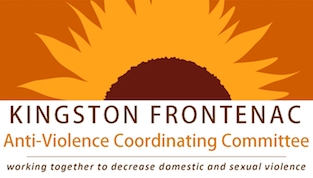Principles that guide and inform KFACC work
Safety
The safety of victims of partner abuse and sexual violence, and their children, must be given priority consideration during any involvement with these individuals.
Confidentiality
We understand the relationship between safety and confidentiality for victims and survivors of partner abuse and sexual violence. We will protect the confidentiality of the victims and survivors with whom we work, and their families, within the constraints and parameters of the law.
Respect and dignity
All persons should be treated with dignity, compassion and respect. We acknowledge the intrinsic worth and value of victims and survivors of partner abuse and sexual violence, and are committed to working cooperatively and collaboratively with the persons we serve.
Inclusiveness
Services should be inclusive, equitable and sensitive to gender, race, ethnicity, culture, religious/spiritual affiliation, ability/disability, sexual orientation/ preference, and socio-economic status.
Community awareness and education
Community awareness and understanding of issues relating to partner abuse and sexual violence are integral to the prevention and eradication of these forms of violence.
KFACC belief statements
We believe that:
- All persons have the right to lives free from violence and the threat or fear of violence.
- Victims of partner abuse and sexual violence are entitled to intervention and support regardless of where or when the violence occurred, and regardless of the nature or duration of the relationship between the victim and the offender.
- Partner abuse and sexual violence are criminal issues. Perpetrators of these types of violence must be held accountable for their actions to the full extent of the law.
- Partner abuse and sexual violence are complex issues with many contributing factors. Both types of violence occur regardless of socio-economic status, class, age, sexual orientation/preference, occupation, mental health status, citizenship status, ability, spiritual beliefs, language, race, culture or ethnicity.
- The primary dynamic of partner abuse and sexual violence is power and control: the offender uses intimidation, threats, humiliation and pain to establish control over his victim. Whether a one-time occurrence or part of an ongoing relationship, the dynamic of power and control makes it difficult for some victims of partner abuse and sexual violence to reach out for help and/or to end their relationship with the offender.
- The development and implementation of a coordinated plan for a comprehensive community-based service delivery system is one of the most effective approaches to partner abuse and sexual violence. No single organization has the resources or mandate necessary to address the multiple and complex needs of the victims of partner abuse and sexual violence, their children, and offenders.
- Victims of partner abuse and sexual violence should be active participants in the development and delivery of any services. A participatory approach to service delivery empowers clients, ensures that the client’s priority needs are addressed, and promotes cooperation and collaboration between service users and service providers.
- The unique experiences of children who have witnesses partner abuse, or any other forms of domestic violence, must be given due consideration and attention during the development and implementation of any service delivery strategy.
- Coordinated community and law enforcement response systems are one aspect of the multi-pronged, long term solution to ending partner abuse. Education, advocacy, social action, and other preventative measures are essential components of any collaborative strategy to eradicate partner abuse and sexual violence.

